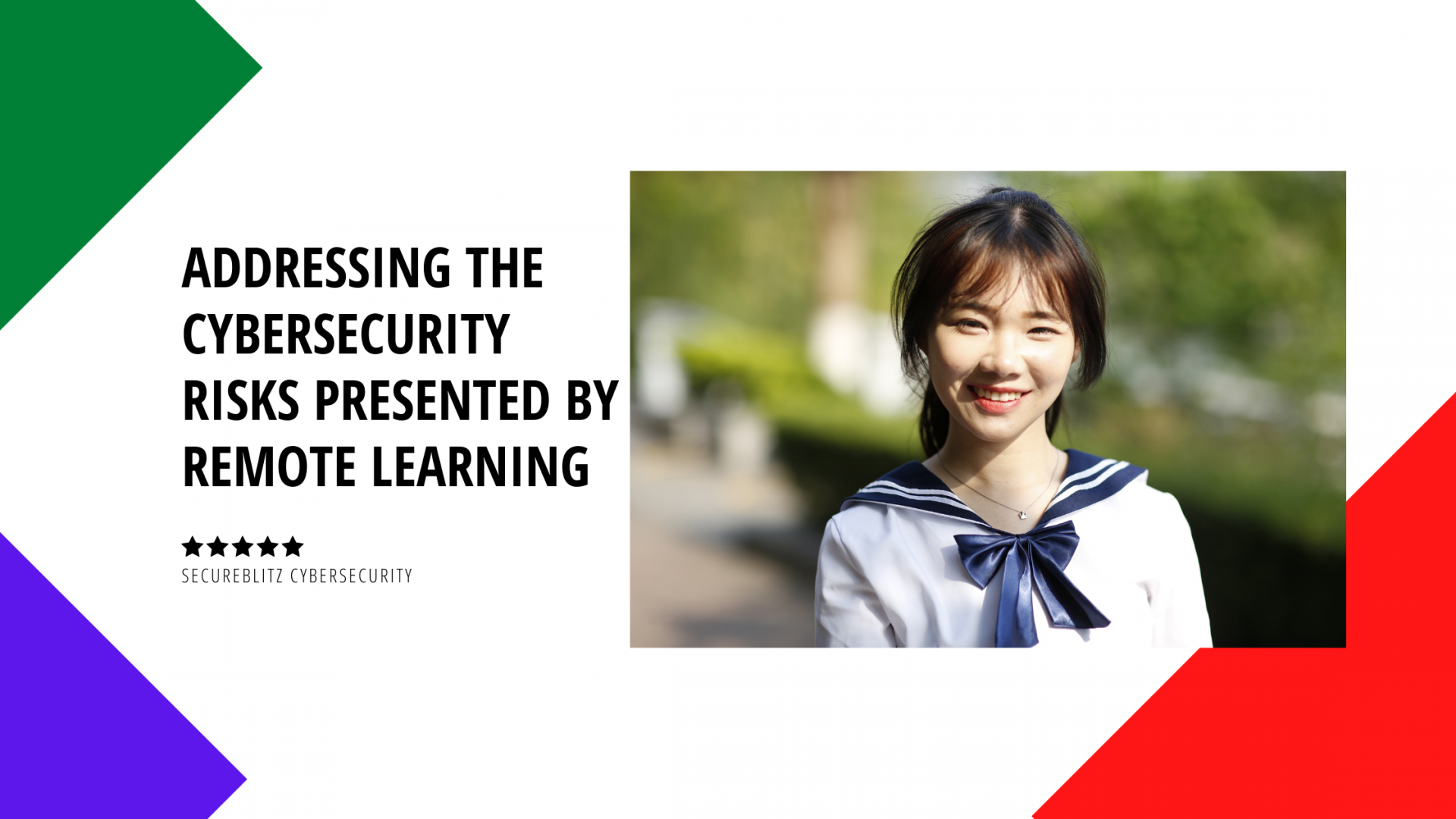This post will address the cybersecurity risks associated with remote learning.
The swift pivot to remote learning has cast light on an array of cybersecurity risks, threatening our educational landscape with increased cyber attacks and data breaches. With everything from identity theft to denial of service attacks jeopardizing elearning security, it’s clear that safeguarding our virtual classrooms is paramount.
As we delve into enhancing remote learning security, we’ll explore strategies to fortify against prevalent threats, such as implementing two-factor authentication and encouraged security elearning.
Our journey will encompass practical steps towards data privacy and defense against social engineering, ensuring a resilient learning experience for all.
Table of Contents
Common Cybersecurity Threats in Remote Learning
As we navigate the digital corridors of remote learning, we must be vigilant against the rising tide of cybersecurity threats that seek to undermine our elearning security.
The allure of data-rich educational institutions has not gone unnoticed by cybercriminals, who exploit insufficient security measures to launch attacks.
Let’s unpack the most pressing threats we face:
- Malware: Malicious software poses a significant threat to distance learning security, capable of crippling school systems, as exemplified by the Rialto Unified School District incident. Regular software updates and penetration testing are critical defenses against such attacks.
- Phishing: This threat capitalizes on human error, with attackers often masquerading as trusted entities to deceive victims into divulging sensitive information. Inspired elearning security awareness programs are our best countermeasure, educating students and staff to recognize and report suspicious activities.
- Unauthorized Access: The sanctity of sensitive data hinges on robust access controls, including two-factor authentication, to thwart unauthorized users from infiltrating our virtual learning spaces.
Moreover, Zoom bombing, a disruptive intrusion into video conferences, underscores the need for stringent security protocols.
By integrating comprehensive authentication and encryption measures, and fostering a culture of security elearning, we can fortify our defenses against these cyber assaults.
The Role of Personal Devices in Cybersecurity Risks
In the wake of the pandemic, the surge in remote work and learning has led to a reliance on personal devices, inadvertently broadening the cyber attack surface for nefarious entities.
The personal nature of these devices introduces a plethora of cybersecurity risks, ranging from malware infiltration to data privacy breaches.
Here, we examine the pivotal role that personal devices play in cybersecurity risks within remote learning environments:
- Phishing and Malware: Personal devices are often the targets of phishing attacks and malware distribution. These devices, when used for elearning purposes, may lack the robust security measures of institution-issued hardware, leaving sensitive educational data exposed to identity theft and other cyber threats.
- Network Security: Remote learners may connect to elearning platforms through unsecured Wi-Fi networks, increasing the risk of interception by cybercriminals. The absence of a secure network can lead to unauthorized access and potential data breaches, compromising remote learning security.
- Device Management: The disparity in security practices among personal devices poses a significant challenge. Regular software updates, a cornerstone of device security, are frequently neglected, leaving exploitable vulnerabilities open to cyber attacks.
To fortify the defenses of remote learners and their personal devices, educational institutions and organizations must take proactive steps:
- Security Awareness Training: Implement inspired elearning security awareness programs to educate users on the importance of cybersecurity hygiene and the recognition of social engineering tactics.
- Multi-Factor Authentication: Encourage the use of two-factor authentication to add an extra layer of security, ensuring that only authorized individuals gain access to elearning resources.
- VPN and Software Updates: Advocate the use of VPNs for secure connections and emphasize the necessity of keeping both software and devices up-to-date to defend against the latest cyber threats.
By adopting these strategies and integrating secure remote access technologies like Splashtop, we can mitigate the cybersecurity risks associated with personal devices in remote learning scenarios. It’s essential to establish clear security policies and conduct regular security assessments to maintain a resilient distance learning security posture.
Implementing Effective Cybersecurity Training and Awareness
In our quest to bolster elearning security, we recognize that effective cybersecurity training and awareness are pivotal. A staggering 85% of cyberattacks in 2021 were due to human slip-ups, a figure that brings into sharp relief the critical role of comprehensive training.
Such training must not only cover the basics of Wi-Fi connection security and browser lockdown but also extend to online safety practices for family members who share the learning space.
Here’s how we can cultivate a cybersecurity-aware culture:
- Inclusive Cybersecurity Culture: We treat our employees as the frontline defenders of our data, making cybersecurity a collective priority across the organization. This involves creating a positive environment where every team member feels responsible and empowered to protect our digital assets.
- Diverse Training Programs: This approach includes various training tools tailored to different learning styles and job roles.
Despite these efforts, a troubling 61% of employees fail to pass basic cybersecurity tests post-training, indicating a dire need for training that is both engaging and digestible.
We tackle this by:
- Customizing Content: We steer clear of technical jargon and ensure the training is relevant to each employee’s role, making the content relatable and the learning experience meaningful.
- Practical Application: Employees learn how to spot suspicious activity and practice confidentiality, reinforcing their role in safeguarding against identity theft and cyber attacks.
We also acknowledge the unique challenges of remote learning security, where personal device usage and unsecured connections are prevalent. To address these, we:
- Develop Policies: Establish a company-wide cybersecurity and device policy that is clear and enforceable.
- Continuous Education: Provide regular training updates, keeping pace with the ever-evolving threat landscape.
- Spot and Report: Teach employees the signs of a phishing attack, turning every team member into a vigilant guardian against these prevalent threats.
By committing to regular technology upgrades and ongoing education, we aim to minimize network intrusions and reinforce our first line of defense. With companies like ESET offering tailored cybersecurity training, focusing on the human element is not just a strategy—it’s a necessity to combat the 95% of security issues stemming from human error.
READ ALSO: Managing Remote Teams: Best Practices for Team Extension
Strategies for Enhancing Cybersecurity in Remote Learning Environments
In the dynamic realm of remote learning, we’re constantly refining our strategies to enhance elearning security. Recognizing the unique challenges posed by diverse devices and unsecured networks, we’ve pinpointed several tactics to strengthen our cybersecurity framework:
- Tailored Training Programs: We design training initiatives specific to the needs of remote learners, ensuring they’re equipped with the knowledge to navigate the digital landscape securely.
- Regular Training Updates: Cyber threats evolve rapidly; hence, we keep our training materials fresh and relevant, adapting to new threats as they emerge.
- Simulated Phishing Exercises: By regularly testing our community with simulated attacks, we sharpen their ability to spot and neutralize threats.
Furthermore, we advocate for the following cybersecurity best practices:
- Secure Collaboration Tools: We teach the proper use of collaboration tools, emphasizing the importance of secure communication channels.
- Clear Security Policies: Our remote work security policies are transparent and enforceable, providing a solid foundation for a secure virtual learning environment.
- Cybersecurity Awareness Culture: We foster an environment where every individual is aware and proactive about their role in maintaining elearning security.
To specifically address network security concerns, we’ve implemented:
- Cloud-Based Network Solutions: These offer robust security measures that are scalable and adaptable to the needs of remote and hybrid learning models.
- Firewall Protection: We ensure that advanced firewall technologies safeguard both on-campus and remote learning environments.
- Sustainable Security Measures: Our security infrastructure is designed to withstand various scenarios, ensuring uninterrupted and secure access to educational resources.
READ ALSO: How To Overcome Remote Work Security Threats
Cybersecurity Risks Presented By Remote Learning: FAQs
What are effective strategies to manage cybersecurity risks?
Implement these 8 practical strategies:
- Encrypt your data and create backups
- conduct regular employee training
- keep your systems and software updated
- use strong passwords
- assess and monitor your vendors
- reduce your attack surface
- ensure physical security
- put a kill switch in place
What is a common cybersecurity risk related to remote work?
The most common risk is the use of weak, insecure, or reused passwords and login credentials, which can render cybersecurity measures like firewalls and VPNs ineffective.
What kinds of cyber threats exist in online learning environments?
Cyber threats in online learning range from distractions to cyberbullying and online predators. It’s essential for schools to integrate technology in education while acknowledging these risks.
READ ALSO: Cybersecurity Strategies To Protect Your Critical SaaS Data
How can you reduce the risks associated with using devices for remote work?
To mitigate risks, secure networks and devices by using security measures such as VPNs with encryption to protect data.
Can you provide an example of risk management in cybersecurity?
Risk management examples include patching software bugs, retiring vulnerable assets, or transferring risk responsibility through cyber insurance policies.
What does a cybersecurity risk management plan entail?
A cybersecurity risk management plan involves a strategic approach to identifying, analyzing, evaluating, and addressing cybersecurity threats in an organization.
What is the biggest concern for individuals working remotely?
The greatest concern is often feeling isolated or disconnected due to the lack of in-person interaction, along with home distractions that can affect work focus.
What are the three types of cybersecurity risks?
The types of cyber threats include human errors, such as insider threats and carelessness; malicious actors; software vulnerabilities; infrastructure threats; and data exposures.
What are the top five threats to cybersecurity?
The main cyber threats are phishing and social engineering, ransomware and malware, weak passwords, poor patch management, and insider threats.
Which cybercrime concerns are most pressing for online education today?
The education sector is most threatened by social engineering, particularly phishing and ransomware attacks, as cybercriminals seek access credentials to infiltrate networks.
How can one prevent remote access security risks?
Prevent remote access security risks by encrypting data, using strong firewall and security software, employing two-factor authentication, and restricting access to unauthorized users.
What strategies can address common remote work challenges?
To address remote work challenges, make your office environment flexible, such as working from various locations to combat isolation and maintain a boundary between work and home life.
Conclusion
By embracing these strategies and continuously educating our learners on security topics such as avoiding identity theft, maintaining data privacy, and employing two-factor authentication, we’re committed to creating a secure and inclusive learning environment.
This balance between accessibility and security is critical, as we aim to provide equal opportunities for all learners while protecting them from cyber attacks and ensuring compliance with student privacy laws.
With the integration of AI-driven cybersecurity solutions, we’re at the forefront of combating emerging threats and safeguarding our digital learning spaces.
RELATED POSTS
- 7 Actionable Steps To Prevent And Control Cybercrimes
- Why Cybersecurity Is Imperative For The BFSI Industry?
- How To Get A Cybersecurity Job With No Experience
- Security Tips To Protect Your Home From Burglary [Infographics]
- Network Firewalls: Comprehensive Guide For Non-Tech-Savvy People
- 10 Top Cybersecurity Products On AliExpress
- Secure Remote Access VPN: Everything You Need to Know
- Navigating Cybersecurity Challenges In Remote Work Environment
About the Author:
Christian Schmitz is a professional journalist and editor at SecureBlitz.com. He has a keen eye for the ever-changing cybersecurity industry and is passionate about spreading awareness of the industry's latest trends. Before joining SecureBlitz, Christian worked as a journalist for a local community newspaper in Nuremberg. Through his years of experience, Christian has developed a sharp eye for detail, an acute understanding of the cybersecurity industry, and an unwavering commitment to delivering accurate and up-to-date information.









